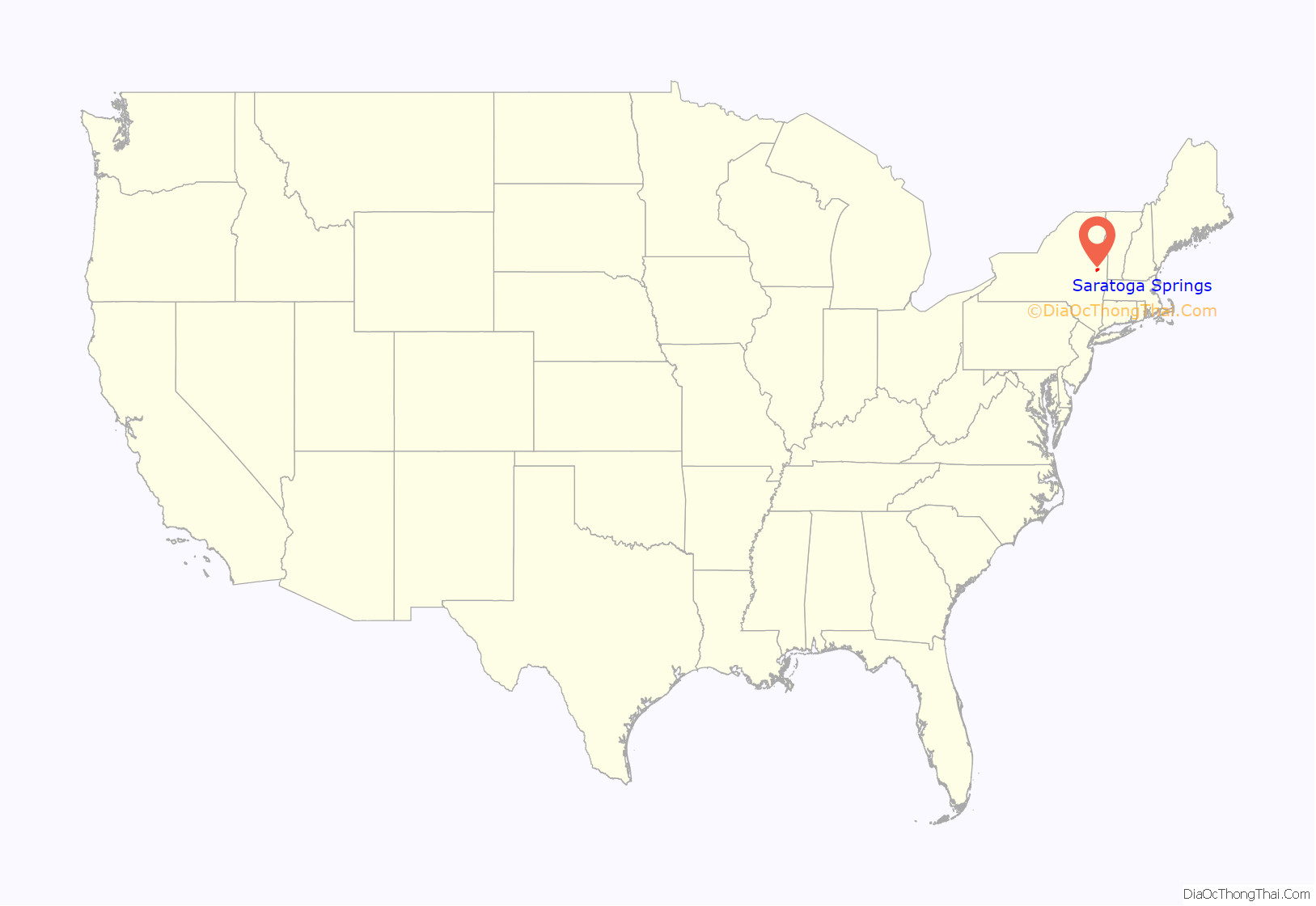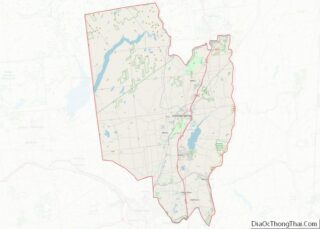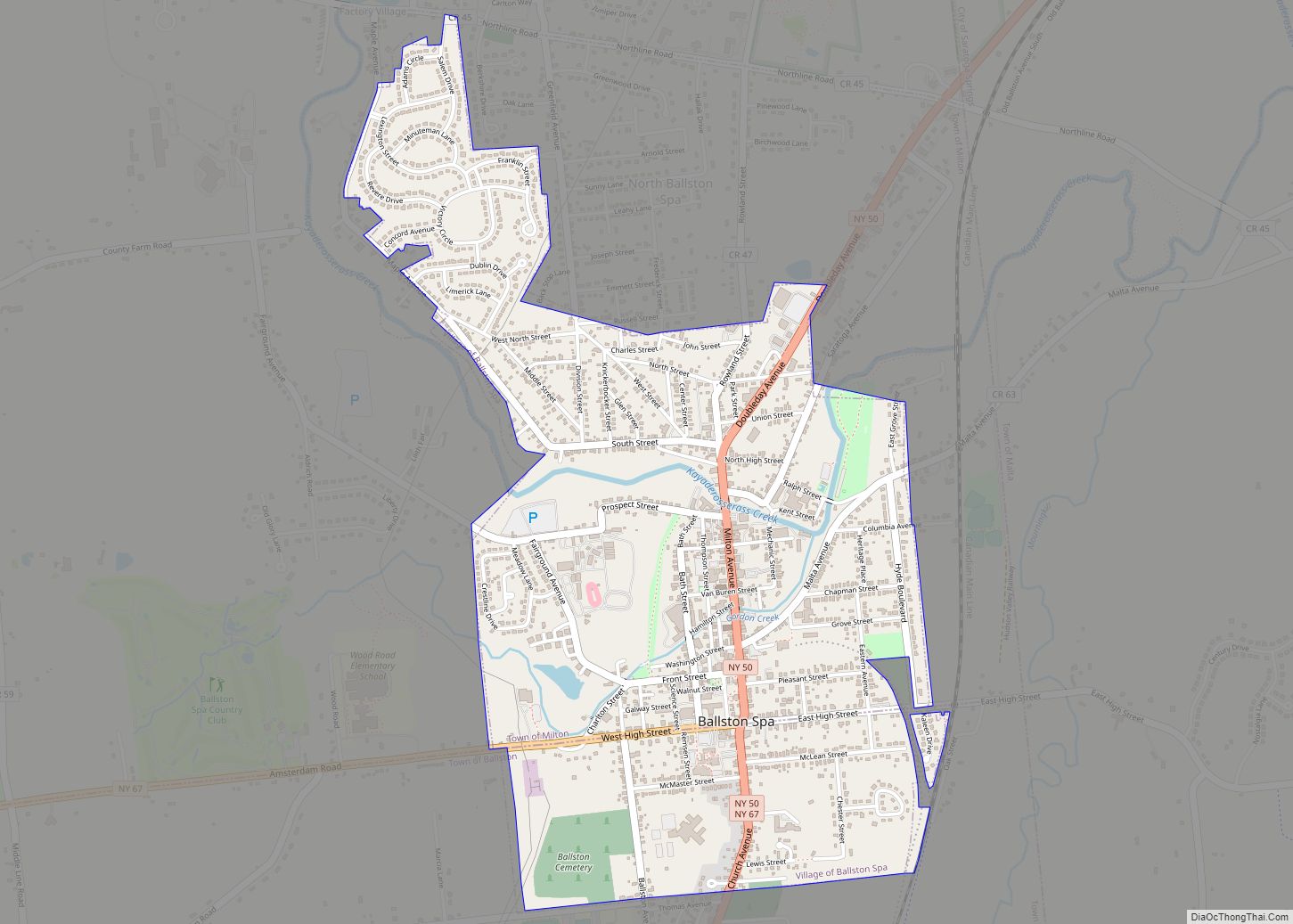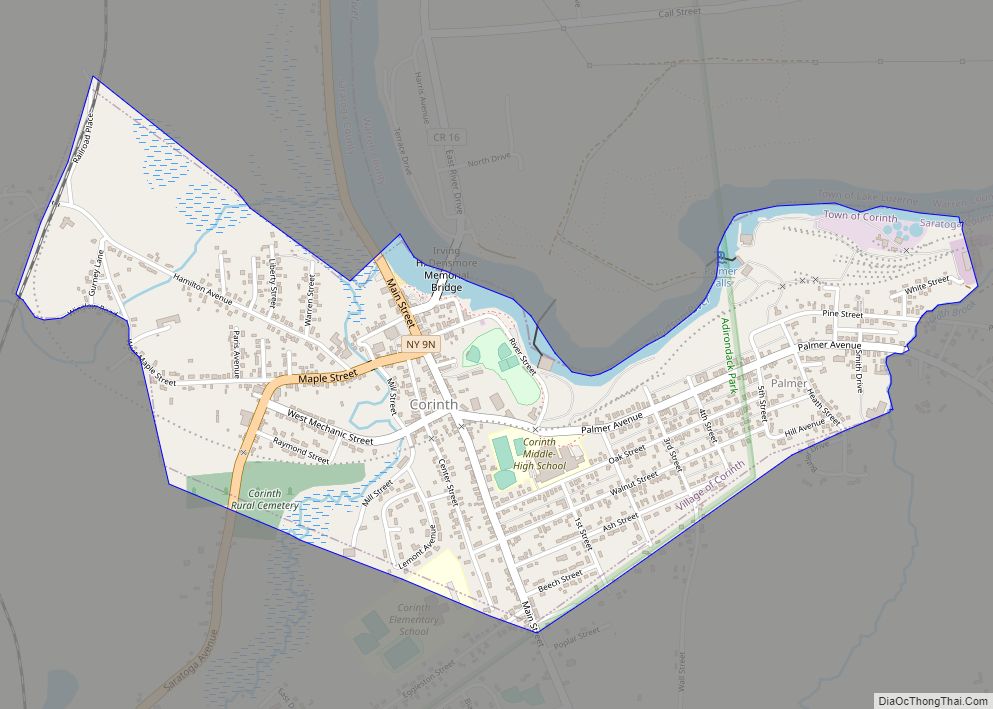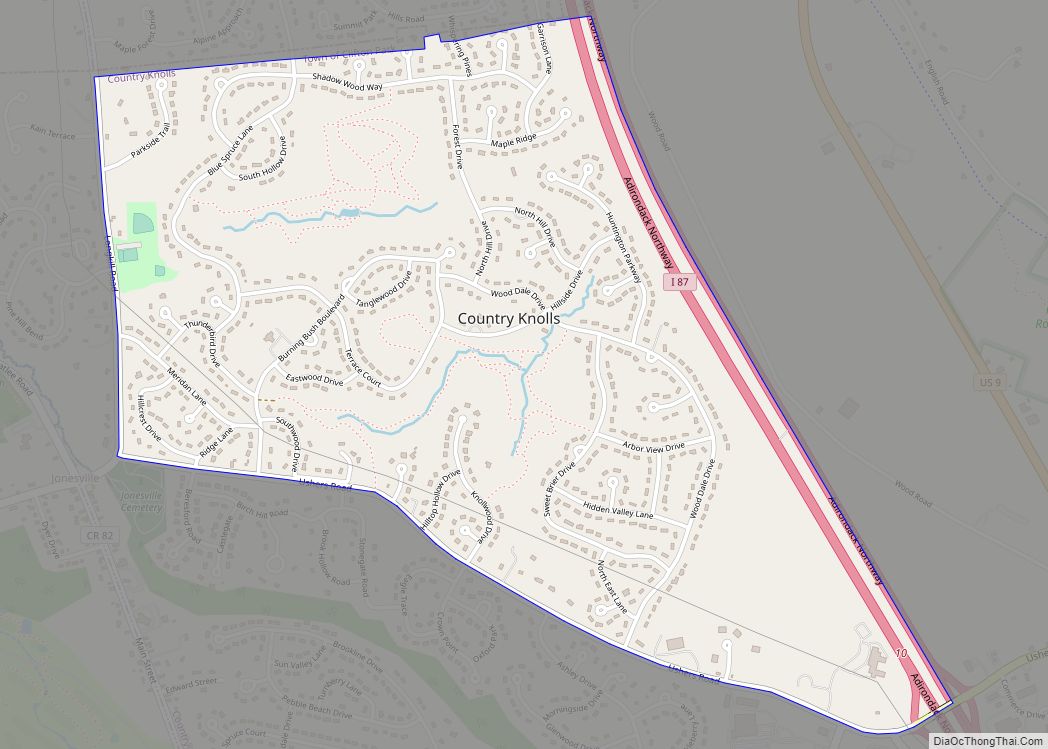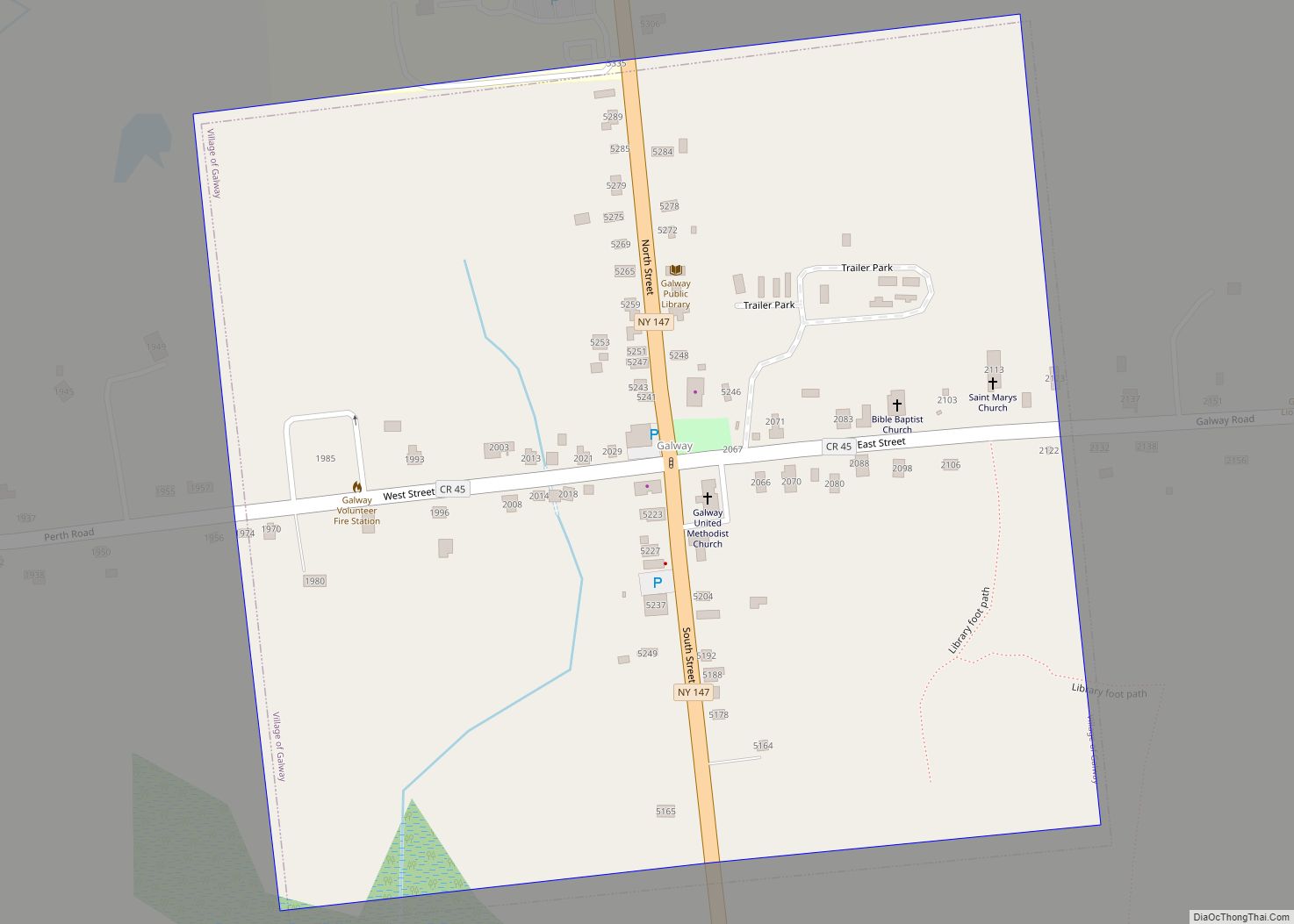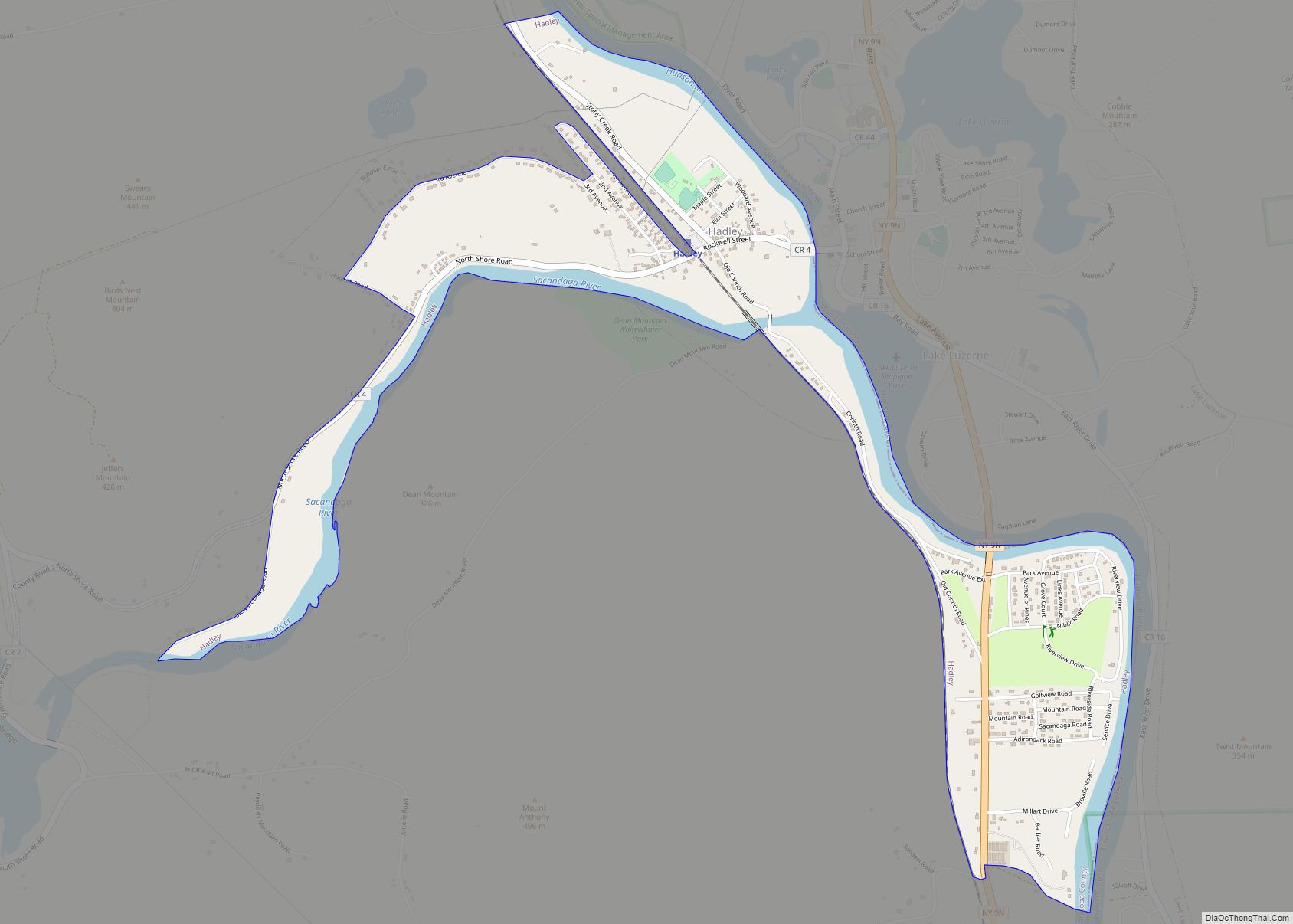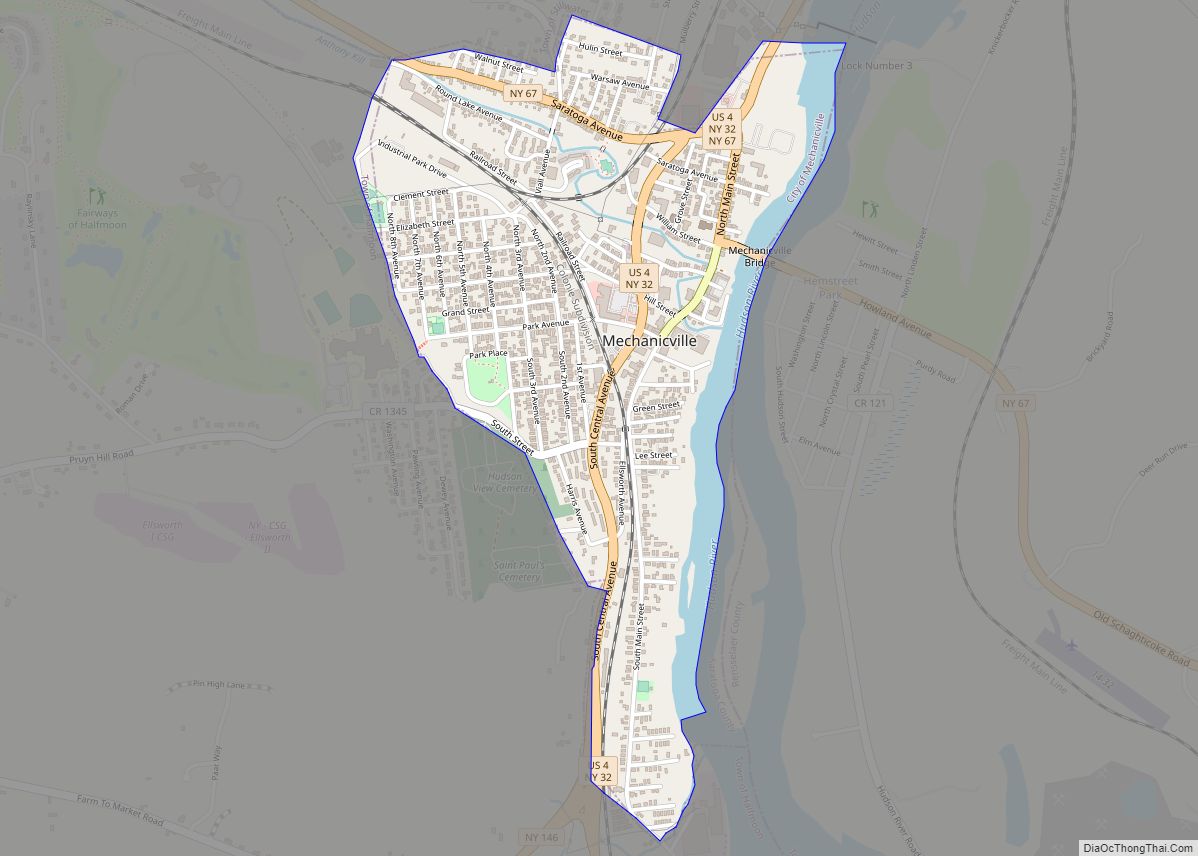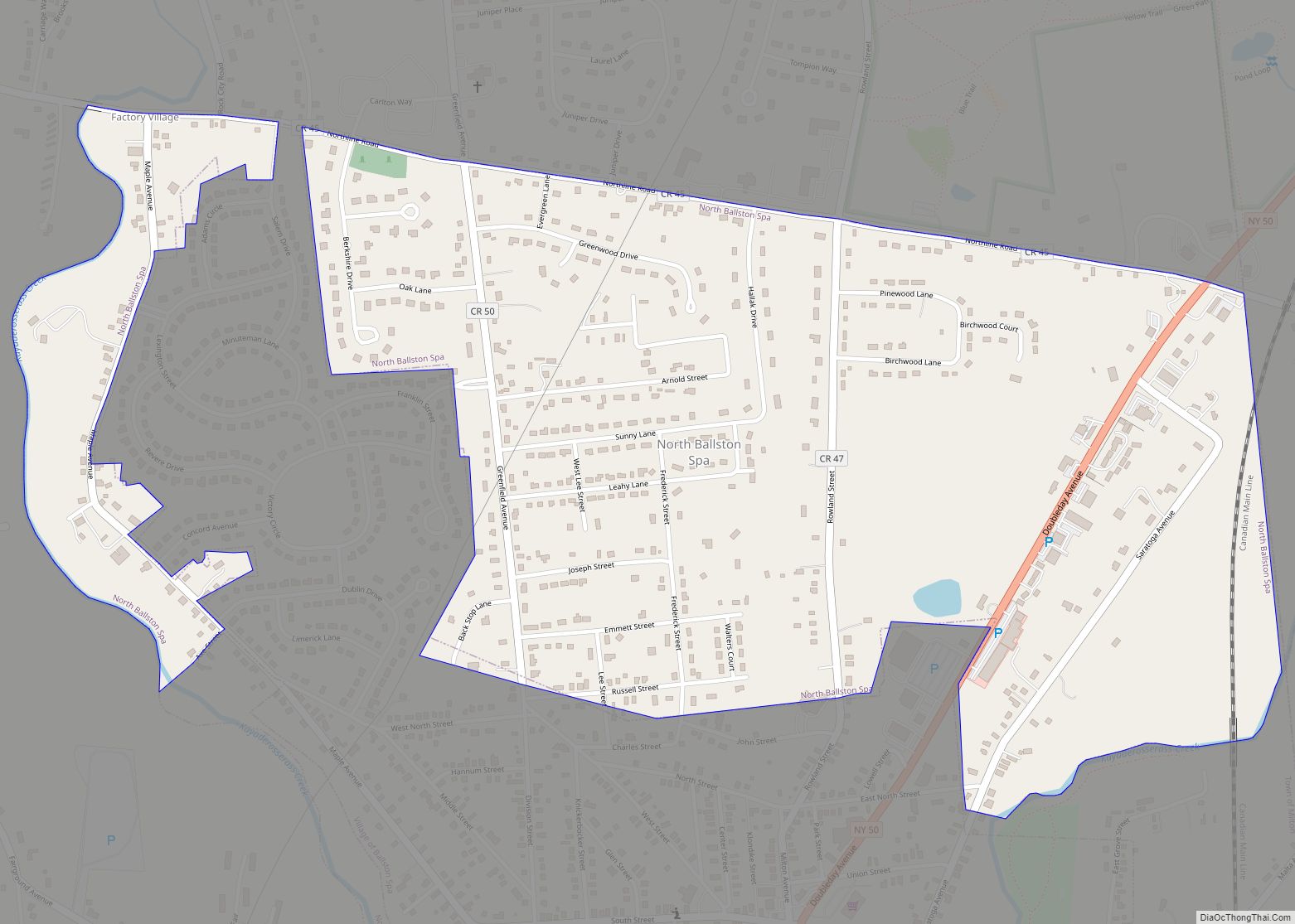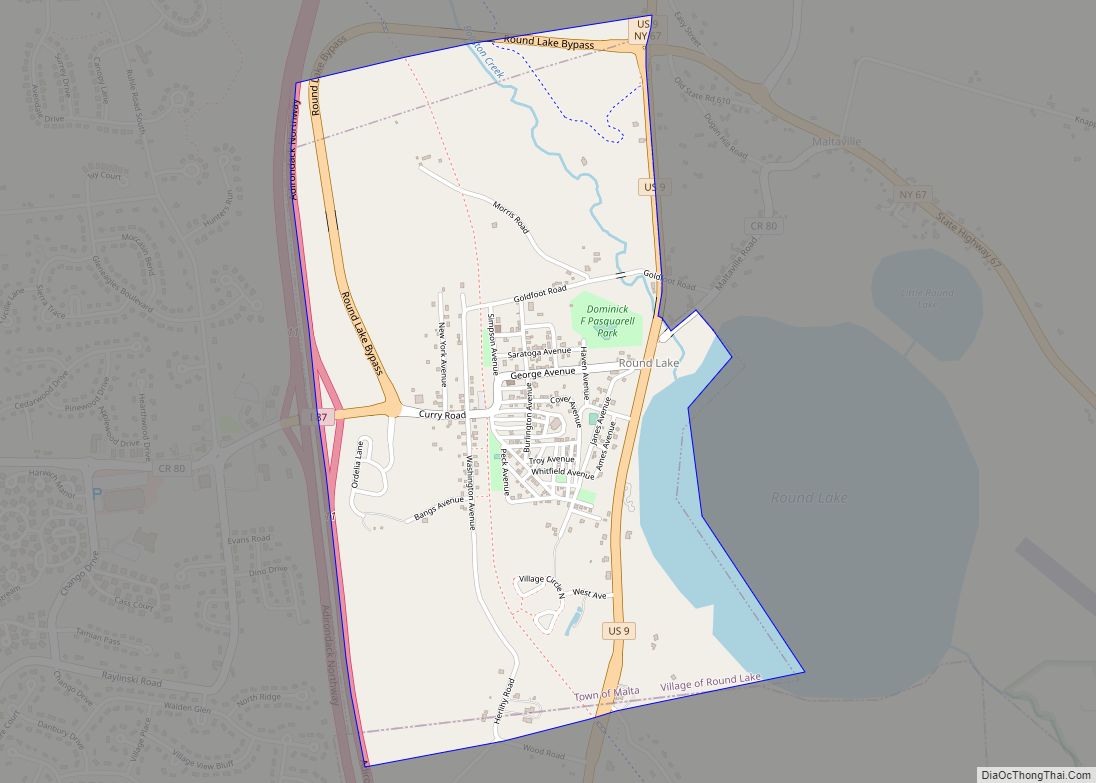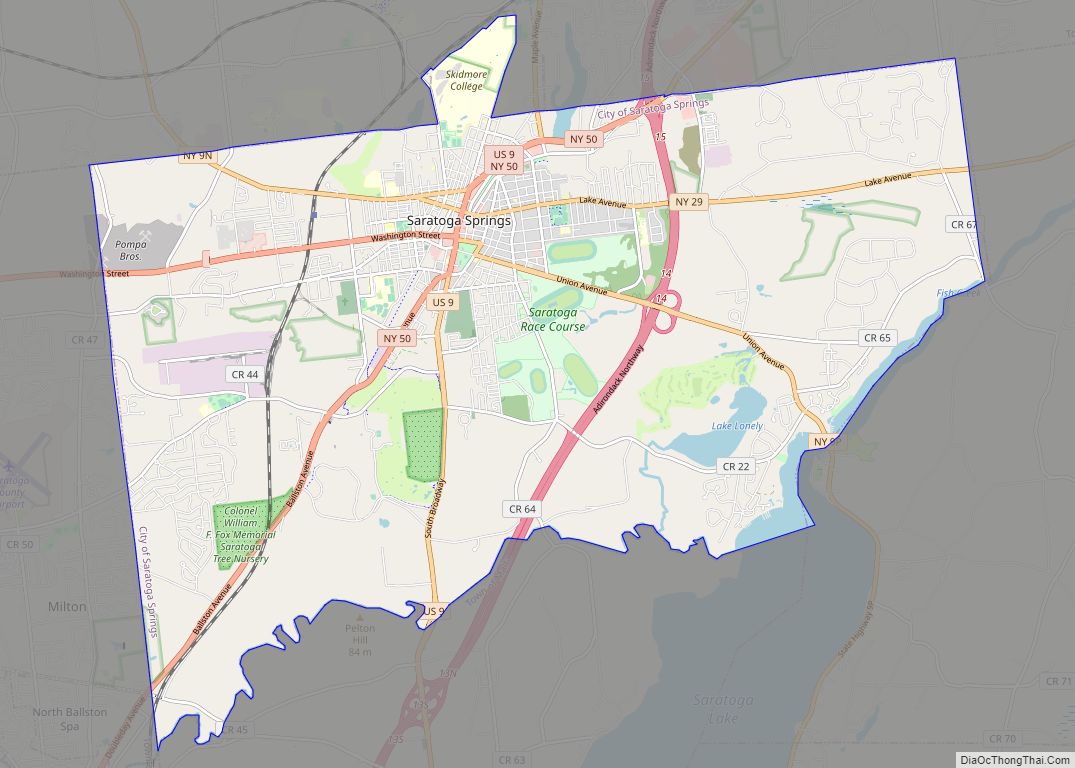Saratoga Springs is a city in Saratoga County, New York, United States. The population was 28,491 at the 2020 census. The name reflects the presence of mineral springs in the area, which has made Saratoga a popular resort destination for over 200 years. It is home to the Saratoga Race Course, a thoroughbred horse racing track, and Saratoga Performing Arts Center, a music and dance venue. The city’s official slogan is “Health, History, and Horses.”
| Name: | Saratoga Springs city |
|---|---|
| LSAD Code: | 25 |
| LSAD Description: | city (suffix) |
| State: | New York |
| County: | Saratoga County |
| Founded: | ca. 1776 |
| Elevation: | 305 ft (93 m) |
| Total Area: | 28.87 sq mi (74.78 km²) |
| Land Area: | 28.07 sq mi (72.69 km²) |
| Water Area: | 0.81 sq mi (2.09 km²) |
| Total Population: | 28,491 |
| Population Density: | 1,015.18/sq mi (391.97/km²) |
| Area code: | 518 838 |
| FIPS code: | 3665255 |
| GNISfeature ID: | 964489 |
| Website: | http://www.saratoga-springs.org/ |
Online Interactive Map
Click on ![]() to view map in "full screen" mode.
to view map in "full screen" mode.
Saratoga Springs location map. Where is Saratoga Springs city?
History
The British built Fort Saratoga in 1691 on the west bank of the Hudson River. Shortly thereafter, British colonists settled the current village of Schuylerville approximately one mile south; it was known as Saratoga until 1831.
Native Americans believed the springs about 10 miles (16 km) west of the village—today called High Rock Spring—had medicinal properties. In 1767, William Johnson, a British soldier who was a hero of the French and Indian War, was brought by Native American friends to the spring to treat his war wounds. (In 1756, Johnson had been appointed British Superintendent of Indian Affairs in the Northeast region due to his success in building alliances with the Mohawk and other Iroquois tribes. He had learned the language and created many trading relationships. He achieved great wealth from trading and landholdings, and was knighted for his service to the Crown with the Iroquois.)
The first permanent European-American settler built a dwelling in the area circa 1776. The springs attracted tourists, and Gideon Putnam built the first hotel for travelers. Putnam also laid out the roads and donated land for use as public spaces.
The Battle of Saratoga, the turning point of the Revolutionary War, did not take place in Saratoga Springs. Rather, the battlefield is 15 miles (24 km) to the southeast, in the Town of Stillwater. A museum dedicated to the two battles sits on the former battlefields. The British encampment before the surrender at Saratoga took place 10 miles (16 km) east of the city, in Schuylerville, where several historical markers delineate points of interest. The surrender of the sword of battle took place where Fort Saratoga had been, south of Schuylerville.
Saratoga Springs was established as a settlement in 1819 from a western portion of the Town of Saratoga. Its principal community was incorporated as a village in 1826, and the entire region became a city in 1915. Tourism was greatly aided by the 1832 arrival of the Saratoga and Schenectady Railroad, which brought thousands of travelers to the famous mineral springs. Resort hotels developed to accommodate them. Patronage of the railroad increased steadily after the Delaware and Hudson Canal Company assumed control in 1870 and began running the Empire State Express directly between New York City and the resort.
In the 19th century, noted doctor Simon Baruch encouraged developing European-style spas in the United States as centers for health. With its wealth of mineral waters, Saratoga Springs was developed as a spa, generating the development of many large hotels, including the United States Hotel and the Grand Union Hotel. The latter was, in its day, the largest hotel in the world.
In 1863, Saratoga Race Course opened, moving to its current location the following year. Horse racing and its associated betting greatly increased the city’s attraction as a tourist destination at a time when horse racing was a popular national spectator sport. In addition, the Saratoga Springs area was known for its gambling, which after the first years of the 20th century was illegal, but still widespread. Most gambling facilities were located on Saratoga Lake, on the southeast side of the city.
By 1870, it was the nation’s top upscale resort relying on natural mineral springs, horse racing, gambling, and luxury hotels. World War II imposed severe travel restrictions which financially ruined the tourist industry. During the 1950s, the state and city closed the famed gambling houses in a crackdown on illegal gambling. The closing and demolition in the 1950s of some premier hotels, including the Grand Union and the United States hurt tourism. However, since 1970 there tourism has revived with a renovated racetrack, a 28-day exclusive racing season, winter sports emphasis, and an influx of young professionals. The city became more accessible with the completion of the Adirondack Northway (Interstate 87), which allowed visitors easier access from the north and south. In addition, the construction of the Saratoga Performing Arts Center in the late 1960s, which features classical and popular music and dance, furthered the city’s renaissance era. The New York City Ballet and the Philadelphia Orchestra have summer residencies there, together with other high-quality dance groups and musicians. Since the early 1990s, there has been a boom of building, both residential and retail, in the west side and downtown areas of the city, and Skidmore College has flourished.
Springs
Before racing began in Saratoga, the area’s natural mineral springs had been attracting wealthy families for many decades. The springs occur on a line where the north-south Saratoga Fault allows water trapped in subsurface shale layers to reach the surface.
Believed to have healing powers, springs can be found in multiple places around the town. Most of the springs are covered by small pavilions and marked by plaques. Others are less conspicuous, sometimes just a spigot in a rock. The springs are famous for their varied and distinct tastes: some are clear freshwater, others are saltier, and some taste strongly of a certain mineral such as sodium bicarbonate or sodium chloride. There is a sulfurous odor, but mineral analysis of the water consistently shows almost no presence of dissolved sulfur. The sulfur is in the form of the gas hydrogen sulfide, which degasses from the water very quickly. Visitors are welcome to bottle the spring water for personal consumption.
Toward the end of the 19th century, excessive pumping for commercial bottling was threatening to deplete the springs. In 1911, the New York State Reservation, now the Spa State Park, was created to protect the springs, and the Lincoln and Roosevelt bath houses were built. Currently, luxury spa treatments with these waters are available in the Roosevelt Baths.
Saratoga Springs Road Map
Saratoga Springs city Satellite Map
Geography
According to the United States Census Bureau, the city has a total area of 29.1 square miles (75 km), of which 28.4 square miles (74 km) is land and 0.6 square miles (1.6 km) (2.17%) is water.
The Adirondack Northway of New York (Interstate 87) and US Route 9 pass alongside and through the city, respectively. New York State Route 29, New York State Route 50, New York State Route 9N, and New York State Route 9P lead into Saratoga Springs. NY 9N has its southern terminus and NY 9P has its northern terminus in the city. US 9 and NY 50 overlap in the city, joined briefly by NY 29.
Saratoga Lake is slightly south of the city.
Climate
See also
Map of New York State and its subdivision:- Albany
- Allegany
- Bronx
- Broome
- Cattaraugus
- Cayuga
- Chautauqua
- Chemung
- Chenango
- Clinton
- Columbia
- Cortland
- Delaware
- Dutchess
- Erie
- Essex
- Franklin
- Fulton
- Genesee
- Greene
- Hamilton
- Herkimer
- Jefferson
- Kings
- Lake Ontario
- Lewis
- Livingston
- Madison
- Monroe
- Montgomery
- Nassau
- New York
- Niagara
- Oneida
- Onondaga
- Ontario
- Orange
- Orleans
- Oswego
- Otsego
- Putnam
- Queens
- Rensselaer
- Richmond
- Rockland
- Saint Lawrence
- Saratoga
- Schenectady
- Schoharie
- Schuyler
- Seneca
- Steuben
- Suffolk
- Sullivan
- Tioga
- Tompkins
- Ulster
- Warren
- Washington
- Wayne
- Westchester
- Wyoming
- Yates
- Alabama
- Alaska
- Arizona
- Arkansas
- California
- Colorado
- Connecticut
- Delaware
- District of Columbia
- Florida
- Georgia
- Hawaii
- Idaho
- Illinois
- Indiana
- Iowa
- Kansas
- Kentucky
- Louisiana
- Maine
- Maryland
- Massachusetts
- Michigan
- Minnesota
- Mississippi
- Missouri
- Montana
- Nebraska
- Nevada
- New Hampshire
- New Jersey
- New Mexico
- New York
- North Carolina
- North Dakota
- Ohio
- Oklahoma
- Oregon
- Pennsylvania
- Rhode Island
- South Carolina
- South Dakota
- Tennessee
- Texas
- Utah
- Vermont
- Virginia
- Washington
- West Virginia
- Wisconsin
- Wyoming
